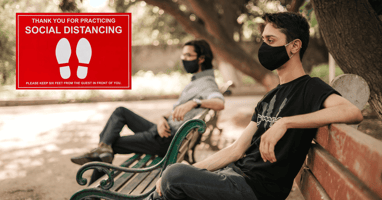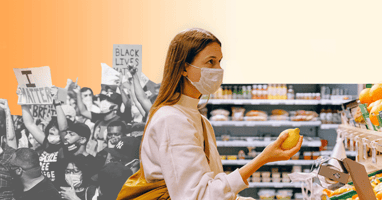IntelliSurvey’s first installment in its “Life in the Time of COVID-19” online survey series,...
Life in the Time of Covid-19: Optimism and Expectations

Much of the U.S. population is currently under stay-at-home or shelter-in-place orders. And although President Trump announced guidelines earlier this month for states to use to begin opening up some ‘non-essential’ businesses by May 1, in reality, several states have done so already despite not having met these guidelines.
Likewise, the UK is ‘locked down’ until at least May 7, although Prime Minister Boris Johnson recently announced that he will unveil a plan to lead the country out of lockdown next week.
IntelliSurvey’s most recent ‘Life in the Time of COVID-19’ surveys, which were fielded in both the US and the UK on April 24, explored the attitudes and beliefs of participants from both nations, including how they feel about the state of the world and how much longer they think their nations will remain on lockdown.
How’s everybody feeling?
Participants were shown a series of emojis and asked to indicate which one best describes how they feel about the state of the world today and one year from now. As shown below in the chart on the left, nearly two-thirds (63%) of those in the UK and over half (56%) of participants in the US selected the sick or sad emoji as best describing their current feelings about the state of the world. Only 7% and 8%, respectively, feel happy about the current state of the world, while the remaining 29% of Britons and 35% of Americans are neutral or not sure of how they feel.
Both UK and US participants are less pessimistic about the future: Nearly one third (31%) of those in the UK and one quarter (25%) of US respondents selected sick or sad emojis to describe their feelings about the world a year from now compared to 63% and 56% today.
In addition, the percentages of those who feel happy about the state of the world increased substantially among both groups, with about three times as many selecting the happy emoji to describe their feelings about the state of the world a year from now versus today (among UK respondents: 20% vs. 7% respectively, and 25% vs. 8% respectively, among US respondents).
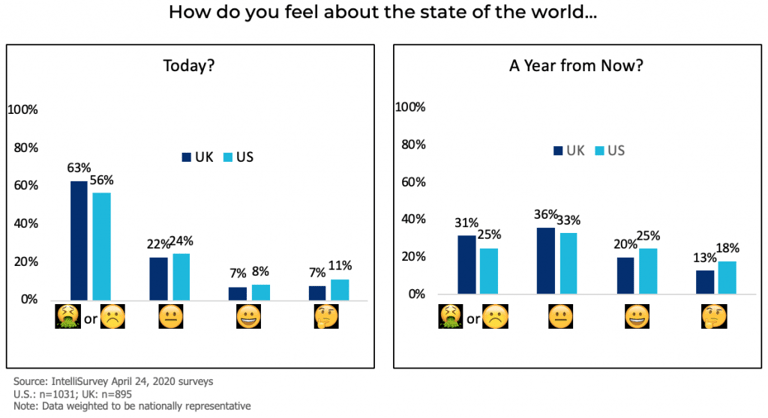
Are we going to be open for business soon?
Using a 7-point scale, where a 1 indicates ‘not at all hopeful’ and a 7 indicates ‘extremely hopeful,’ survey participants were asked how hopeful they are that their nations will be ‘open for business’ in the next 2 weeks.
Perhaps because many US states are already reopening non-essential businesses, when compared to their British counterparts, nearly twice as many US respondents are hopeful that the country will be open for business in two weeks, with 23% in the US indicating hopefulness versus 12% of those in the UK.
More than half (58%) of UK respondents and about one-third (34%) of those in the US are not very hopeful that this will occur.
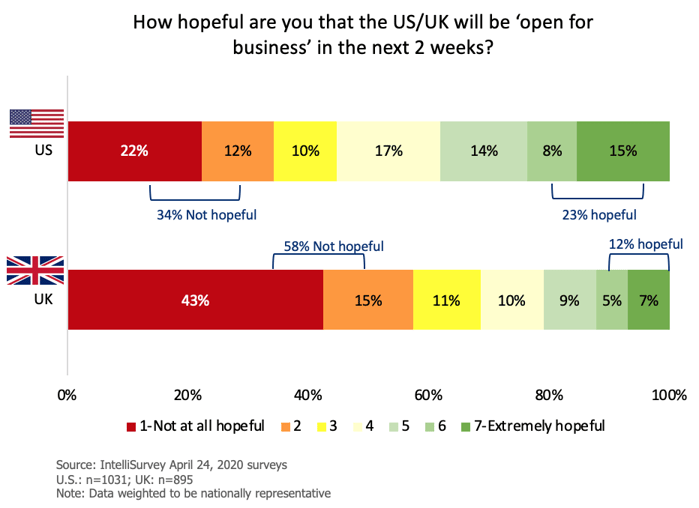
How much longer do we have to keep doing this??
Participants were also asked how much longer they think most of their country will remain on ‘lockdown.’ Again, perhaps because many US states are already loosening restrictions on businesses, a much higher percentage of Americans (45%) think that the US will remain on lockdown for a month or less compared to only 33% of those in the UK.
However, a nearly equal number of Americans also think that the lockdown will be in place for 2-6 months (46%), while the majority of those in the UK (59%) think the lockdown in their country will last that long.
Just 8% of those in both the UK and the US think that the lockdown will last indefinitely and don’t see an end in sight.
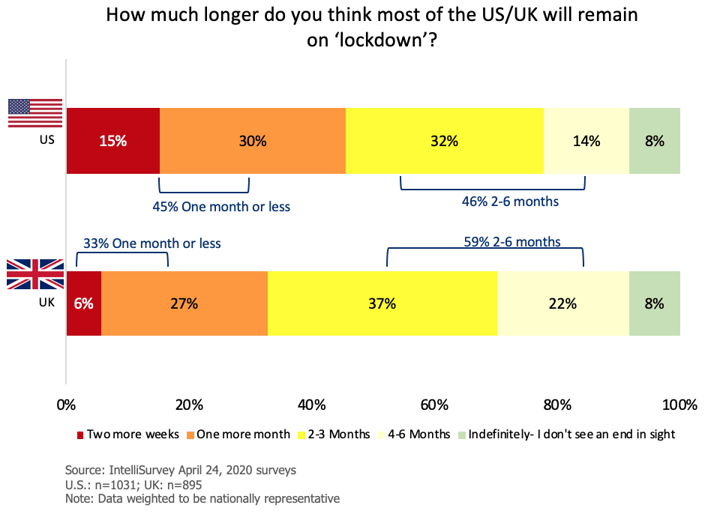
“The future depends on what you do today.” – Mahatma Gandhi
Many people are growing weary of the restrictions the COVID-19 virus has placed on society, but as many health and government officials across the world have stressed, the actions we take (or don’t take) now will impact our future. Widespread adherence to social distancing, wearing masks in public, and using science and data to guide decisions on re-opening businesses are some of the behaviors that will all play a part in successfully navigating this crisis.
For guidance and additional information on COVID-19, please visit the CDC or NIH websites.
Respondents for this survey were collected via Lucid Marketplace.

